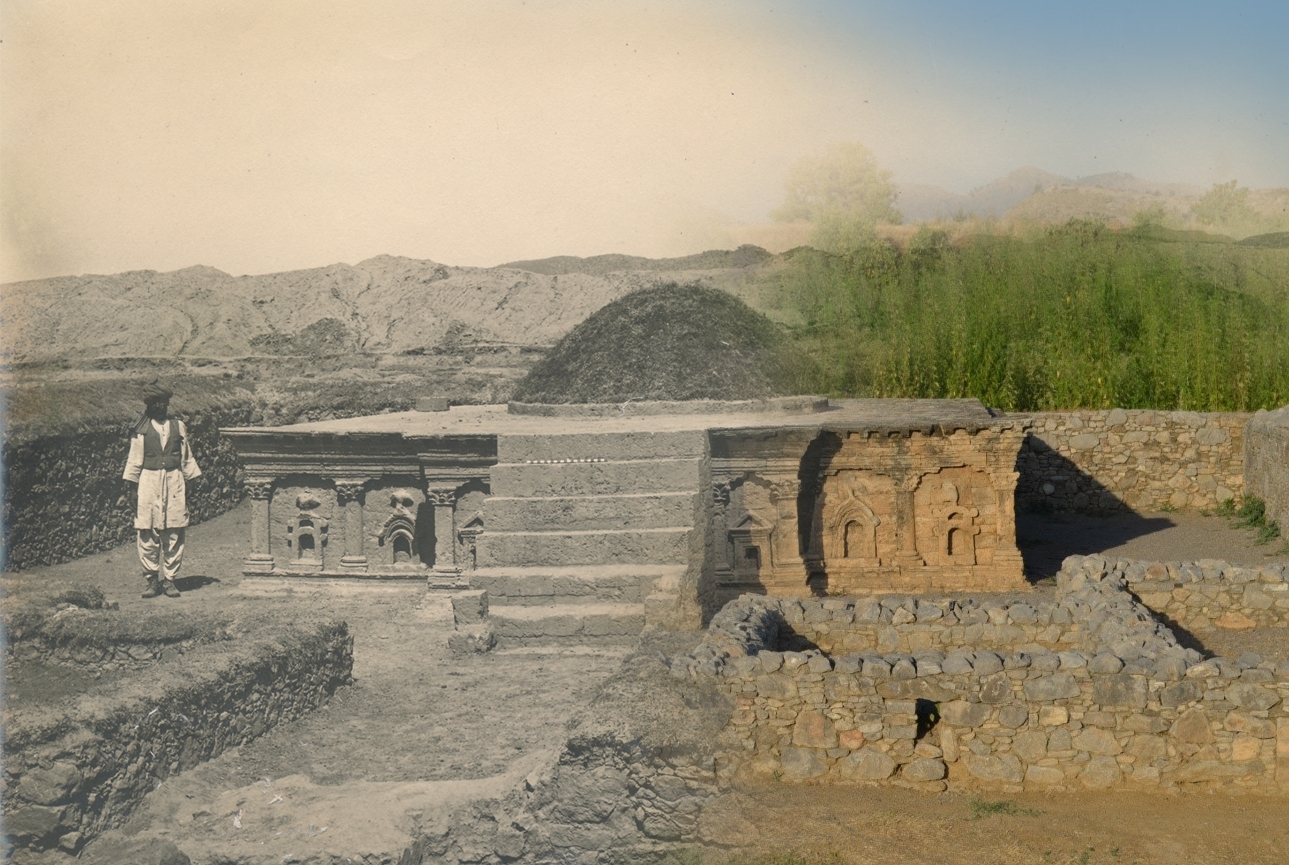Taxila in Focus: 100 Years Since Marshall
24 September 2021 - 16 January 2022
The ancient cities and monuments of the Taxila Valley form a UNESCO World Heritage Site in Pakistan. The focus of excavations by the British archaeologist, Sir John Marshall in the early 20th century, these investigations were recorded in a detailed photographic archive.
This exhibition focuses on the ancient site of Taxila, around 32 kilometres from Pakistan’s federal capital, Islamabad. Taxila, translated by many as ‘city of cut stone’, was a cosmopolitan settlement and a major trading hub. Mentioned in the ancient South Asian epic, the Ramayana, and early Buddhist and Jain traditions, Taxila was one of the ancient capitals of Gandhara, an important territory stretching between the Oxus and Indus Rivers. A revered place of education, it flourished for centuries, benefitting from the flow of goods, ideas and faiths that travelled along the famed Silk Roads.
This significance drew archaeologists to the site, including Sir John Hubert Marshall CIE, FBA (1876-1958), and the Oriental Museum is now home to nearly 5000 images from his personal archives. While Director-General of the Archaeological Survey of India for almost 30 years from 1902, Marshall collected photographs and technical drawings of many significant sites and monuments across the modern states of Bangladesh, India, Myanmar and Pakistan. These include photographs from the excavations he directed at Taxila.
These records can tell us much about the archaeological remains of Taxila, but also about the practice of archaeology in early 20th century South Asia. Taxila in Focus compares this historic imagery with contemporary photographs to document the site’s development since Marshall, as well as new discoveries. It also highlights how Marshall’s archive can contribute to the management and protection of these important historic sites in the present and the future.
In addition to the exhibition at the Oriental Museum, you can also enjoy an online version of the exhibition which includes additional content.
This exhibition has been created in collaboration with the Department of Archaeology and Museums, Pakistan and the UNESCO Chair in Archaeological Ethics and Practice in Cultural Heritage.
 Image caption: ‘Shrine of the Double-Headed Eagle’, Taxila (1st century BCE-1st century CE). Composite image of photograph taken in 1913/1914 and photograph taken in 2019 by Dr Abdul Azeem.
Image caption: ‘Shrine of the Double-Headed Eagle’, Taxila (1st century BCE-1st century CE). Composite image of photograph taken in 1913/1914 and photograph taken in 2019 by Dr Abdul Azeem.


/prod01/channel_4/things-to-do/media/things-to-do/oriental-museum/88326-2000X665.jpg)